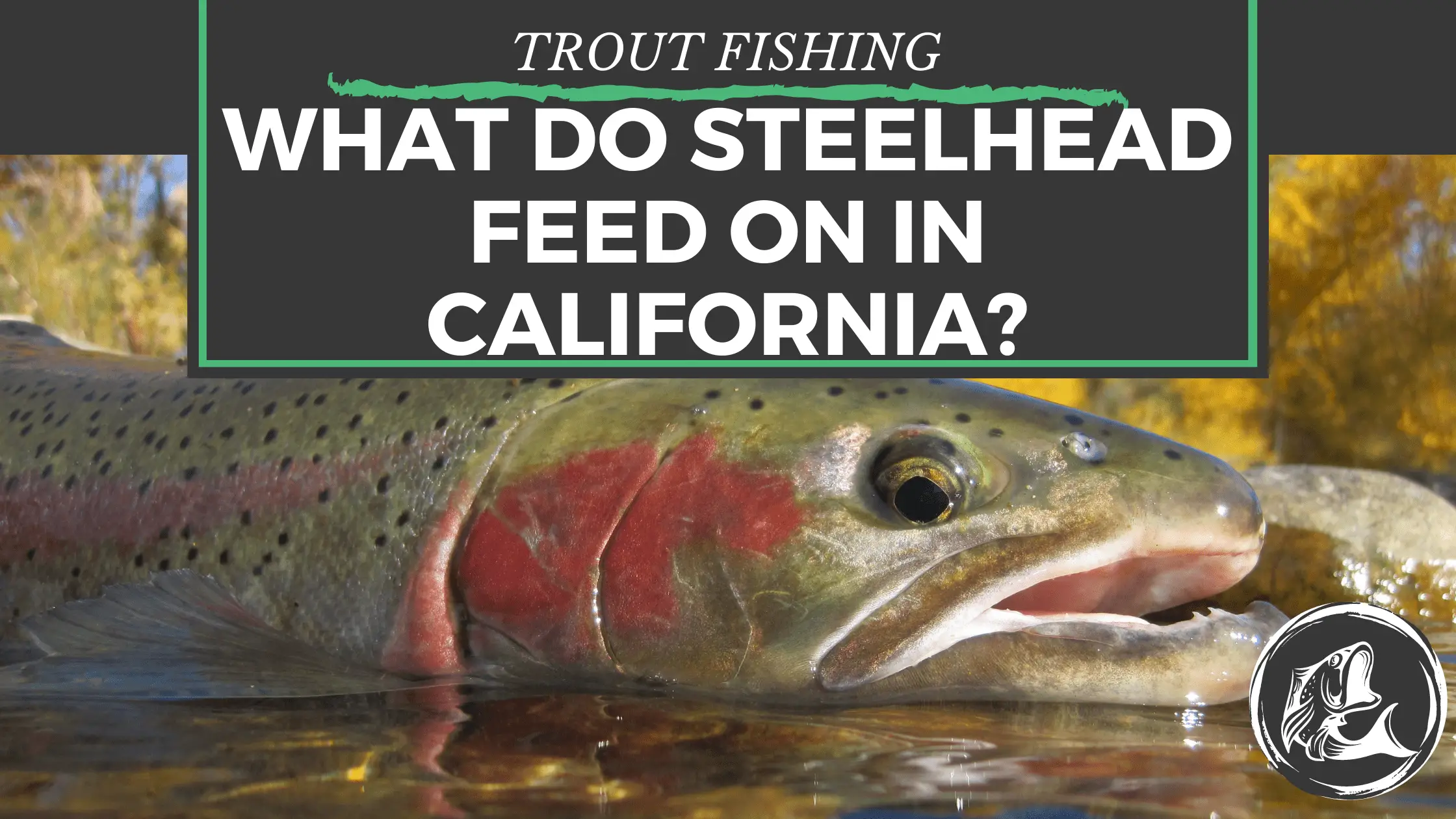The muscular and beautiful rainbow-colored Steelhead fish is one of the most sought-after fish in North America, especially California. So, what do Steelhead feed on in California? Read on to find out!
Their diet mainly consists of smaller forage fish, crustaceans, and zooplankton. However, these fish are notoriously difficult to catch. Well, again, they would not be infamously known by anglers as the “Fish of 1,000 Casts” for no reason. One way to lure the fish of a thousand cast is to bait them with their favorite food. Keep reading to know more about the favorite food of steelheads.
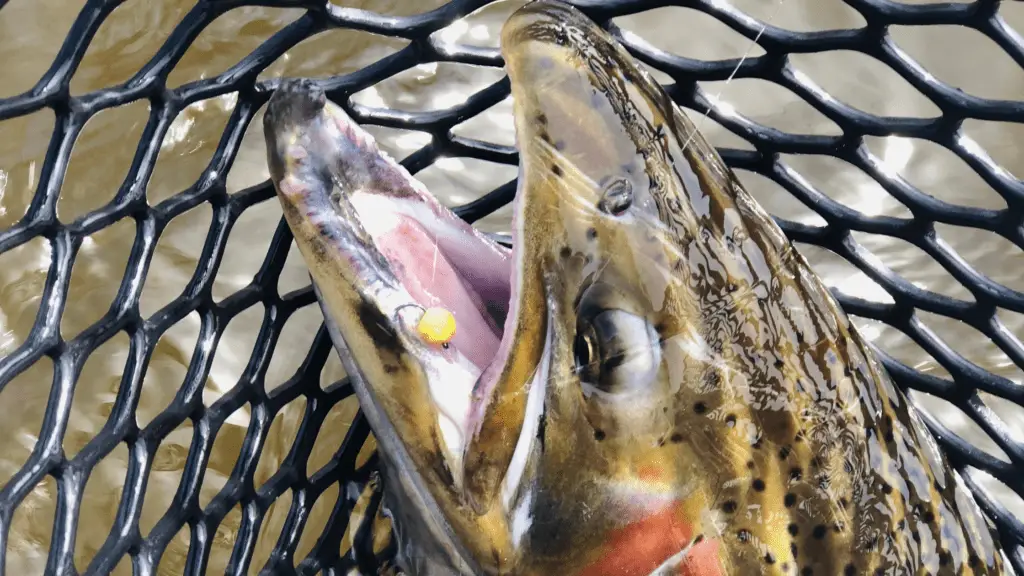
What Is Steelhead’s Favorite Food?
While in the ocean steelhead mainly feed on herring, anchovies, sardines and crustaceans but when they enter the river it becomes a whole different story. When steelhead enter the river their main diet will consist of Salmon eggs during the winter time and bugs during the spring / summer.
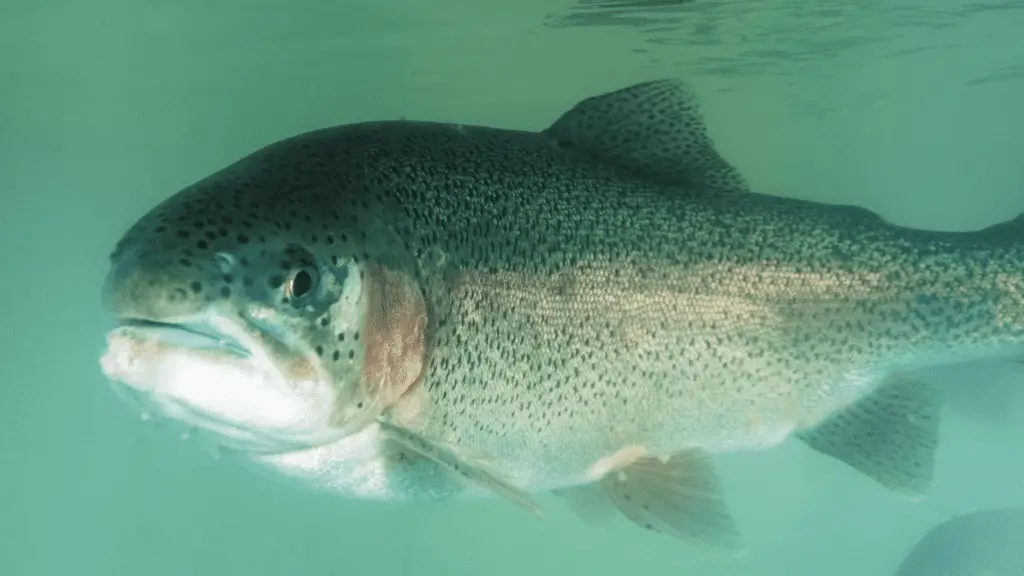
What do Steelhead Feed on in the California Ocean?
Lucky for them, the rich waters of California have an abundant food source for them! Steelheads are no picky eaters, they also feast on other types of small baitfish and crustaceans. While residing in the salt waters of California, they usually eat the following.
Sardines
Sardines are one of the steelhead’s favorite food in the ocean. The pacific sardine is a small schooling fish with a silver body and dark spots on its back. They can grow to 16” (41 cm) long but are regularly seen less than 12” (30 cm).
Mackerel
Pacific Mackerel are most common in the south of Point Conception, California. They are tapered, large-mouthed fish with dark blue, pointy heads. Their dark blue back characterizes them with wavy dark lines, silvery-green undersides. Its size reaches lengths up to 63 cm (25 in) and weight up to 2.7 kg (6 lbs).
Anchovies
They live in areas, usually within 20 miles of the shore. Anchovies are a critical aspect of the food web, especially for steelhead. These typically grow up to seven inches. They have large mouths and a long, protruding snout. Their scales are blue-green color on top and lustrous silver below. Also, they develop a unique silver stripe along their side in adulthood.
Krill
A krill is a type of crustacean common in the open ocean. There are many species of krill, but they all commonly appear in extremely dense concentrations. Krill can be found from southeast Alaska to northern Baja California, mostly in waters less than 300 feet (90 meters) deep. The body is elongated and shrimp-like.
Herring
Herring are found throughout the coasts of California but are more common in the northern part. Usually, they stay by the coast and do not migrate extensively. Herrings can reach 46 cm (18 inches) in length but typically no longer than 22.9 cm (9 inches). Typically, herrings have dark blue to olive coloring on their back, which fades to a silver belly. They have no distinctive dark spots.
Capelin
Capelin can be found in a range stretching from the Pacific’s Juan de Fuca Strait to the Atlantic Ocean. These are slender, tiny fish that resemble smelt. They feature a pointed snout, a huge dorsal fin, and a little fatty fin behind it, as well as a somewhat projecting lower jaw. Also, they have a silvery underside and a green or olive-green lateral line, with a silvery-white underside.
Squid
Steelhead not only gorge on fish and crustaceans, but they may also eat mollusks such as the squid. Pacific squids sport a long, cone-shaped body. Because of its color, this animal is also called the “opalescent” squid, but it can change its color to match its surroundings or reflect its mood. Also, they are named as the “market” squid, which comes from its popularity as human food.
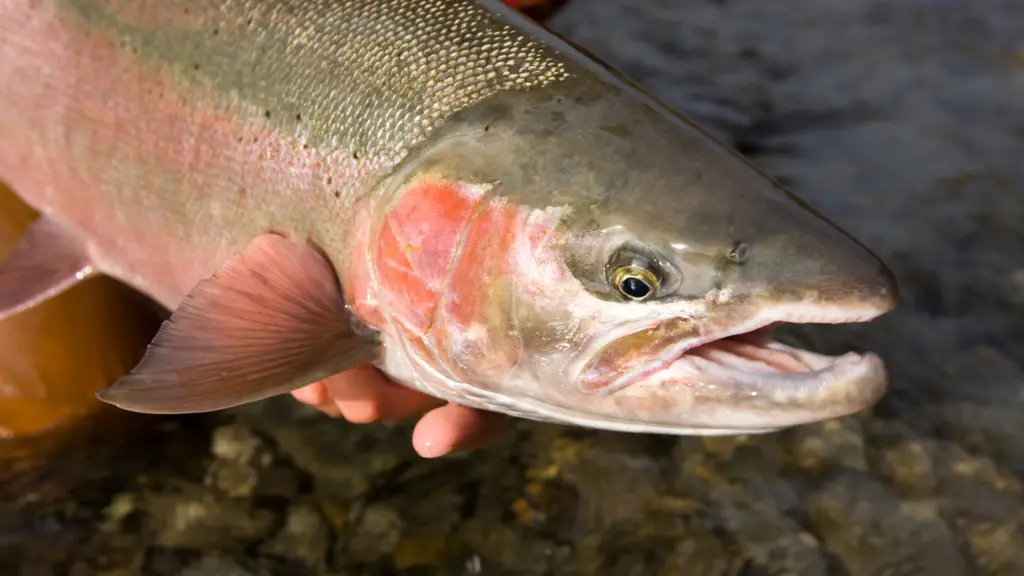
Cannibalism Among Steelhead
The strong and mighty steelhead do indulge themselves in their neighbor fishes. It may be true that they are not that friendly with other fish. However, are they affectionate with their fellow steelheads? Do they practice cannibalism similar to their family of trout’s?
Cannibalism among steelhead is not as customary as in other trout species. Some researchers have found out that cannibalism is still present, albeit very rare, it can impact steelhead populations nonetheless.
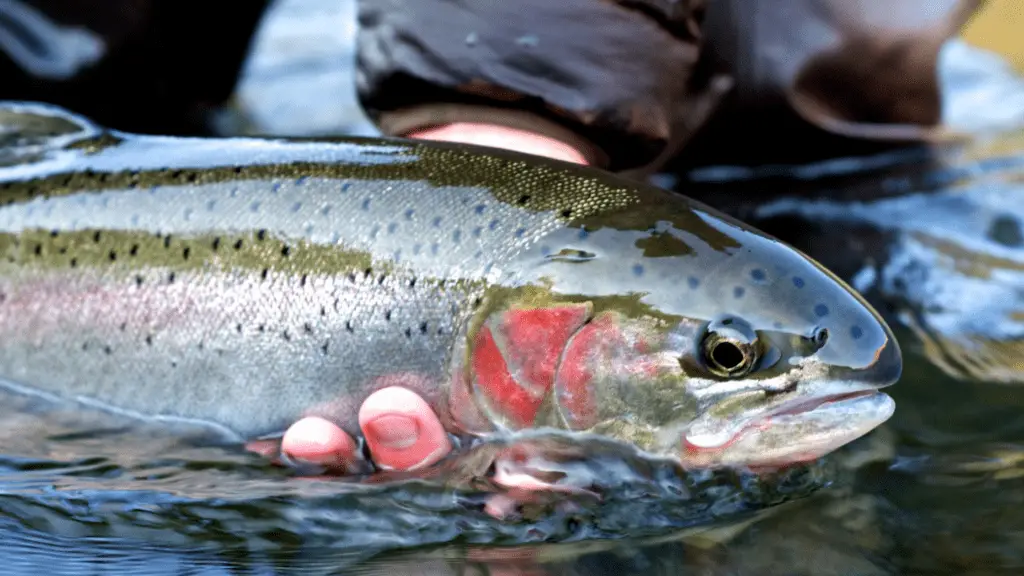
Do Steelhead Feed In Rivers?
Steelheads are not born in the ocean. However, their diet in the river is a little different. Like newborn babies, they have to be nourished first with the food they can consume in the river. Of course, steelheads still eat in the river where they were born. Despite the lack of their favorite diet in the river, there are still various selections they can choose from.
What Do Steelhead Feed on in the California Rivers?
Newly hatched Steelheads will consume their egg sac. While dwelling in freshwater, steelhead will feed on various insects, crustaceans, fish eggs, and smaller baitfish until they actively feed on zooplankton and larvae until they are a few inches in size.
When it’s time for more fulfilling meals, they feed on smaller insects, snails, leeches, and worms. After 2-3 years, it is time for them to leave the calmer stream of the river and migrate into the ocean but these steelhead will return from time to time to spawn and will continue to feed on a similar diet.
Best Bait for Steelheads
Anglers may have a wide variety of baits to choose from, given that steelheads are not picky eaters. However, to hook them, there’s a catch. You must use baits they are attracted to, or else they will just ignore your bait and continue preying on other fish. The best bait for steelheads comes in three varieties: live, dead, and artificial baits.
1. Live Bait
Majority of the time, the most effective bait is a live and moving one. Nothing beats the action and excitement of live bait in every aggressive steelhead’s mouth. Nevertheless, it should be on the grounds of clean, oxygen-rich water to be effective. This is perfect for steelhead fishing in the ocean of California.
2. Dead Bait
As the name insinuates, using dead bait uses a deceased fish as bait. So, if you are going after convenience, you don’t have to keep it alive, which is especially helpful if you’re on the go. Fresh-cut bait also leaves a strong aroma trail. Correspondingly, dead baiting is, in fact, the most effective choice for scent-based hunts in muddy waters. However, this is not the best bait in the ocean.
3. Artificial Bait
There are many benefits to using artificial bait instead of a real one. It is very convenient to use and easily available in the market. Jigs, spinners, plugs, and other tools are under this category.
The best baits for steelheads are the following:
Artificial Eggs
Salmon eggs are only available during certain times of the year and are difficult to come by. Artificial eggs, on the other hand, are a good substitute. Because of their adaptability, artificial eggs have become very popular for attracting steelhead. You can add scents to attract fish or drench them in liquid krill. Additionally, this bait is reusable and available for purchase on the market.
Pink Worms
Surprisingly, the most successful and popular steelhead fishing bait appears to be fake pink worms. These were once only used as bass fishing lures or bait, but they’ve since made a name for themselves in the steelhead fishing scene. They’re inexpensive, simple to use, and collect, and they won’t die or clutter up your tackle bags like real worms or nightcrawlers.
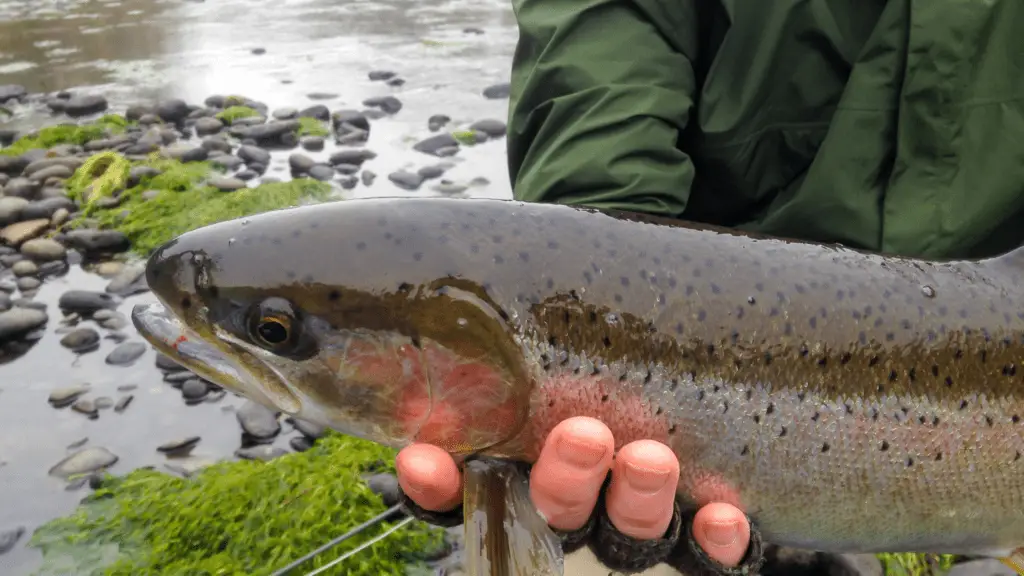
The Diet of the Strong Steelhead
Uniquely, steelheads have a huge selection in the food web. They may gorge on various food, ranging from their egg sacs to insects, worms, crustaceans, small fishes, and even their bizarre appetite for mammals.
Additionally, the steelhead get their muscular and rigorous body from their abundant diet. Thus, they are aggressive and definitely hard to catch. Surely, catching the fish of the thousand casts is definitely an exciting and fun activity you can enjoy with your friends and family on the West Coast!

